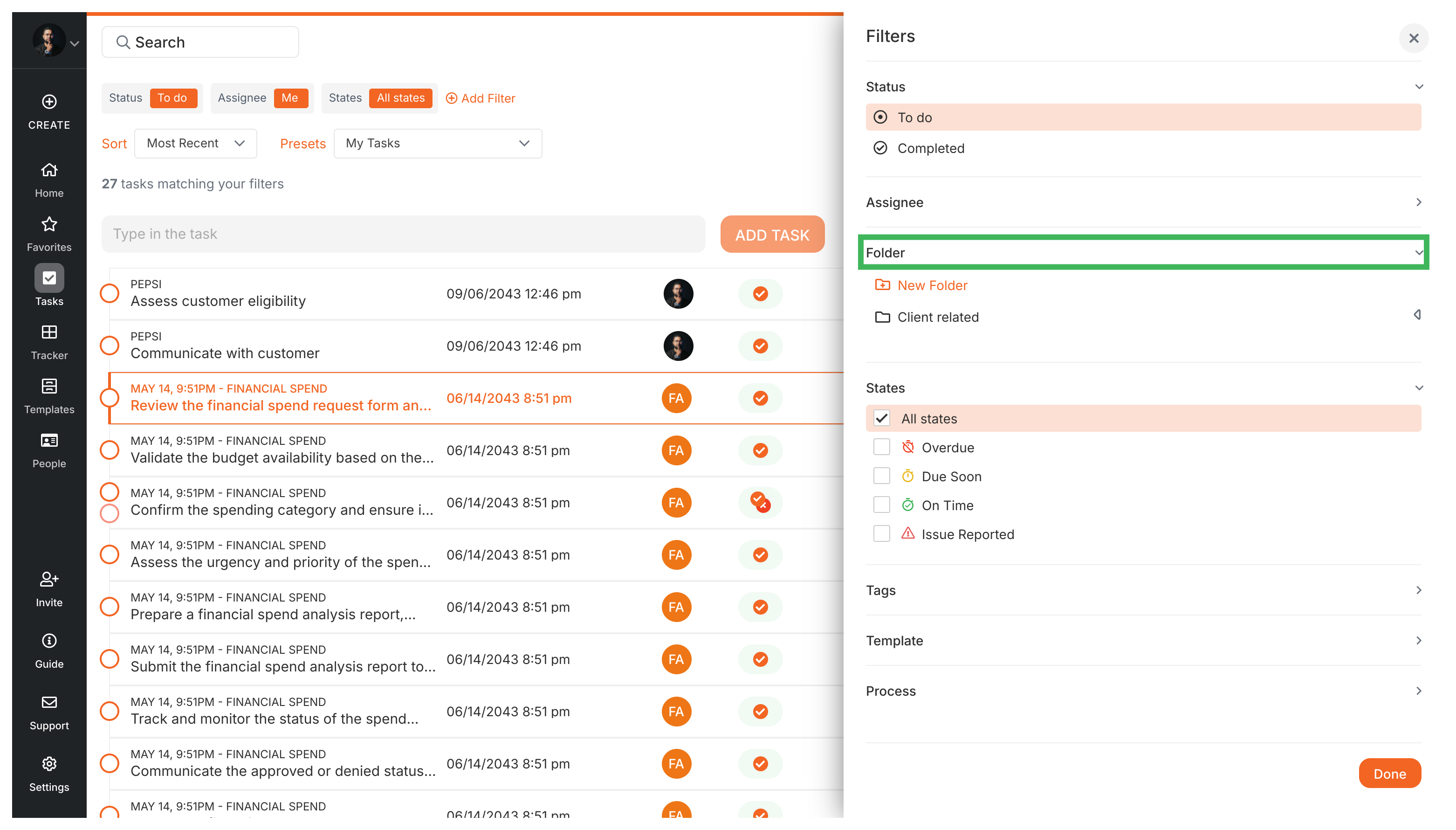Organize Processes > Organize processes into folders
Organize tasks and processes into folders
Tallyfy has two separate folder systems plus tags for organization.
Tallyfy has two completely separate sets of folders:
- Template Folders: Used only in the Templates library section to organize your master templates. Learn more here.
- Task/Process Folders: Used only in the Tasks and Tracker views to organize your active work (running processes and individual tasks).
Templates and active work have separate folder systems because they need different organizational structures.
Example:
- Template Folder:
HR Templates>Onboarding - Process Folders:
Active Onboardings - Sales Team,Active Onboardings - IT Team
This article focuses on Task/Process Folders used in the Tasks and Tracker views.
Create folders in the Tasks view to group related tasks.
- Find the task in your Tasks view.
- Click the menu icon (three dots ⋮) on the task card.
- Select Add to Folder.
- Choose an existing folder or create a new one.

- Go to the Tasks view.
- Click Add filter.
- Select Folder as the filter type.
- Choose the folder you want to see tasks from.

Running processes can be organized into folders in the Tracker view.
- Go to the Tracker view.
- Find the running process card.
- Click the menu icon (three dots ⋮) on the process card.
- Select Add to Folder.
- Choose an existing folder or create a new one.
- Go to the Tracker view.
- Click Add Filter.
- Select Folder as the filter type.
- Choose the folder you want to see processes from.
In addition to folders, you can use Tags (flexible labels) to organize both tasks and processes.
- Tagging Tasks: Open the task, click the menu (⋮), select Add Tags.
- Tagging Processes: Open the process, click the menu (⋮), select Add Tags.
- Filtering by Tag: Use the Tag filter option in both the Tasks and Tracker views.
Tags let items belong to multiple categories (a task could be tagged “Urgent” and “Client A”), while folders provide a single location.
Tracker View > Organize processes
Templates > Using folders for templates
Was this helpful?
- 2025 Tallyfy, Inc.
- Privacy Policy
- Terms of Use
- Report Issue
- Trademarks